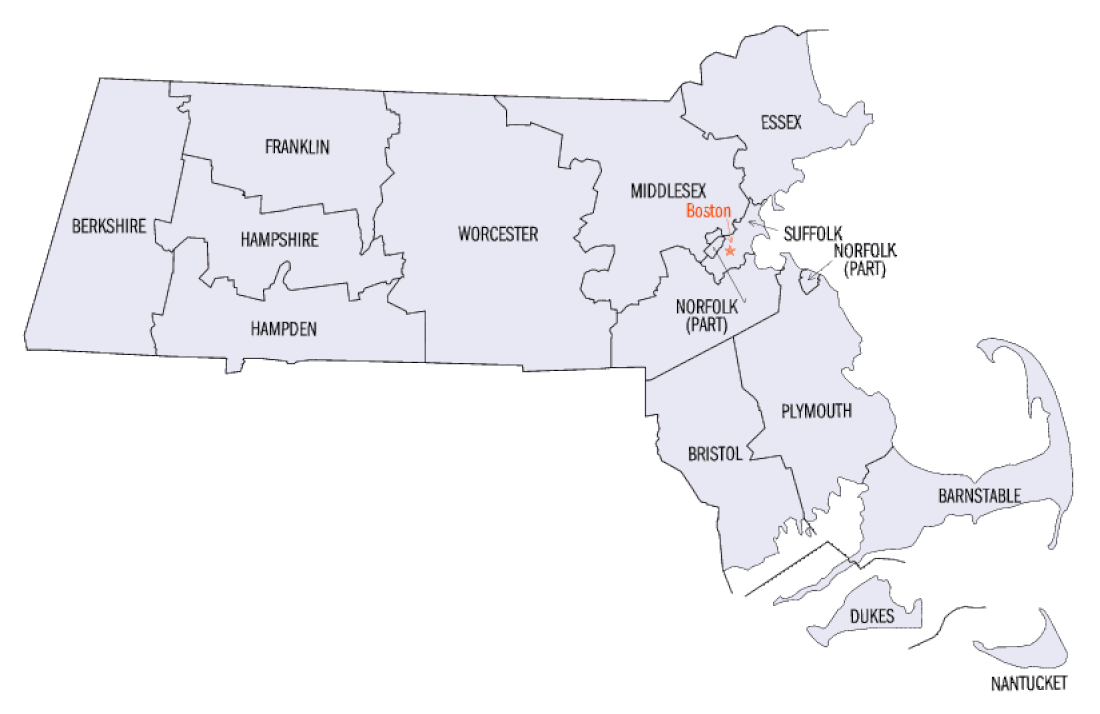County
|
FIPS code[4]
|
County seat[5]
|
Established[6]
|
Origin[7]
|
Meaning of name[8] |
Population
(2020)[9] |
Area[6] |
Map |
| Barnstable County |
001 |
Barnstable | 1685 | One of three original counties created in the Plymouth Colony | After its county seat of Barnstable, which is named after the English town of Barnstaple |
228,996 |
396 sq mi
(1,026 km2) |  |
| Berkshire County |
003 |
Pittsfield | 1761 | From part of Hampshire County. Government abolished in 2000.[3] | For the English county of Berkshire |
129,026 |
931 sq mi
(2,411 km2) | 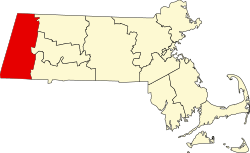 |
| Bristol County |
005 |
Taunton | 1685 | One of three original counties created in the Plymouth Colony | For its original county seat of Bristol, Massachusetts, which is named for the English port city of Bristol – when the Town of Bristol joined Rhode Island, the name of the county was kept |
579,200 |
556 sq mi
(1,440 km2) | 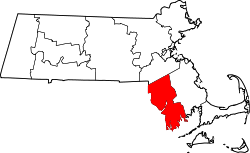 |
| Dukes County |
007 |
Edgartown | 1695 | From Martha's Vineyard and the Elizabeth Islands, which had been part of Dukes County, New York until Massachusetts gained it in 1691 | Formerly a part of Dukes County, New York until 1691, the land at one time was the possession of the Duke of York |
20,600 |
104 sq mi
(269 km2) |  |
| Essex County |
009 |
Salem,
Lawrence | 1643 | One of four original counties created in the Massachusetts Bay Colony. Government abolished in 1999.[3] | For the English county of Essex |
809,829 |
498 sq mi
(1,290 km2) | 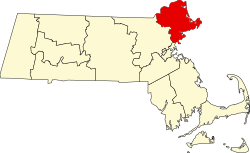 |
| Franklin County |
011 |
Greenfield | 1811 | From part of Hampshire County. Government abolished in 1997.[3] | For Benjamin Franklin (1706–1790), early American scientist, diplomat, and politician |
71,029 |
702 sq mi
(1,818 km2) |  |
| Hampden County |
013 |
Springfield | 1812 | From part of Hampshire County. Government abolished in 1998.[3] | John Hampden (1595—1643), the famous 17th century English parliamentarian |
465,825 |
618 sq mi
(1,601 km2) | 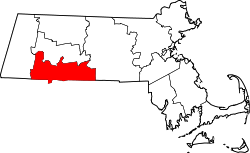 |
| Hampshire County |
015 |
Northampton | 1662 | From unorganized territory in the western part of the Massachusetts Bay Colony. Government abolished 1999.[3] | For the English county of Hampshire |
162,308 |
529 sq mi
(1,370 km2) | 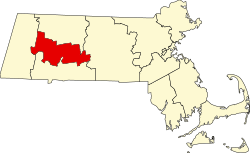 |
| Middlesex County |
017 |
Lowell,
Cambridge | 1643 | One of four original counties created in the Massachusetts Bay Colony. Government abolished in 1997.[3] | For the English county of Middlesex |
1,632,002 |
824 sq mi
(2,134 km2) | 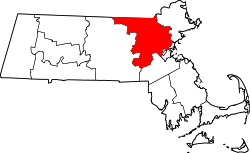 |
| Nantucket County |
019 |
Nantucket | 1695 | From Nantucket Island which had been part of Dukes County, New York until Massachusetts gained it in 1691. | The Town of Nantucket, itself derived from a Wampanoag word meaning "place of peace" |
14,255 |
48 sq mi
(124 km2) | 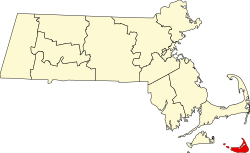 |
| Norfolk County |
021 |
Dedham | 1793 | From part of Suffolk County. | For the English county of Norfolk |
725,981 |
400 sq mi
(1,036 km2) | 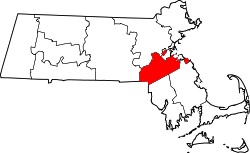 |
| Plymouth County |
023 |
Brockton,
Plymouth | 1685 | One of three original counties created in the Plymouth Colony. | For its seat of Plymouth, which is named for the English port city of Plymouth |
530,819 |
661 sq mi
(1,712 km2) |  |
| Suffolk County |
025 |
Boston | 1643 | One of four original counties created in the Massachusetts Bay Colony. Government abolished in 1999.[3] | For the English county of Suffolk |
797,936 |
58 sq mi
(150 km2) |  |
| Worcester County |
027 |
Worcester | 1731 | From parts of Hampshire County, Middlesex County and Suffolk County. Government abolished in 1998.[3] | For its county seat of Worcester, which is named in honor of the English city of Worcester and the English Civil War Battle of Worcester in 1651, a Parliamentarian victory |
862,111 |
1,513 sq mi
(3,919 km2) | 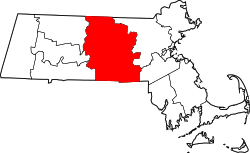 |

